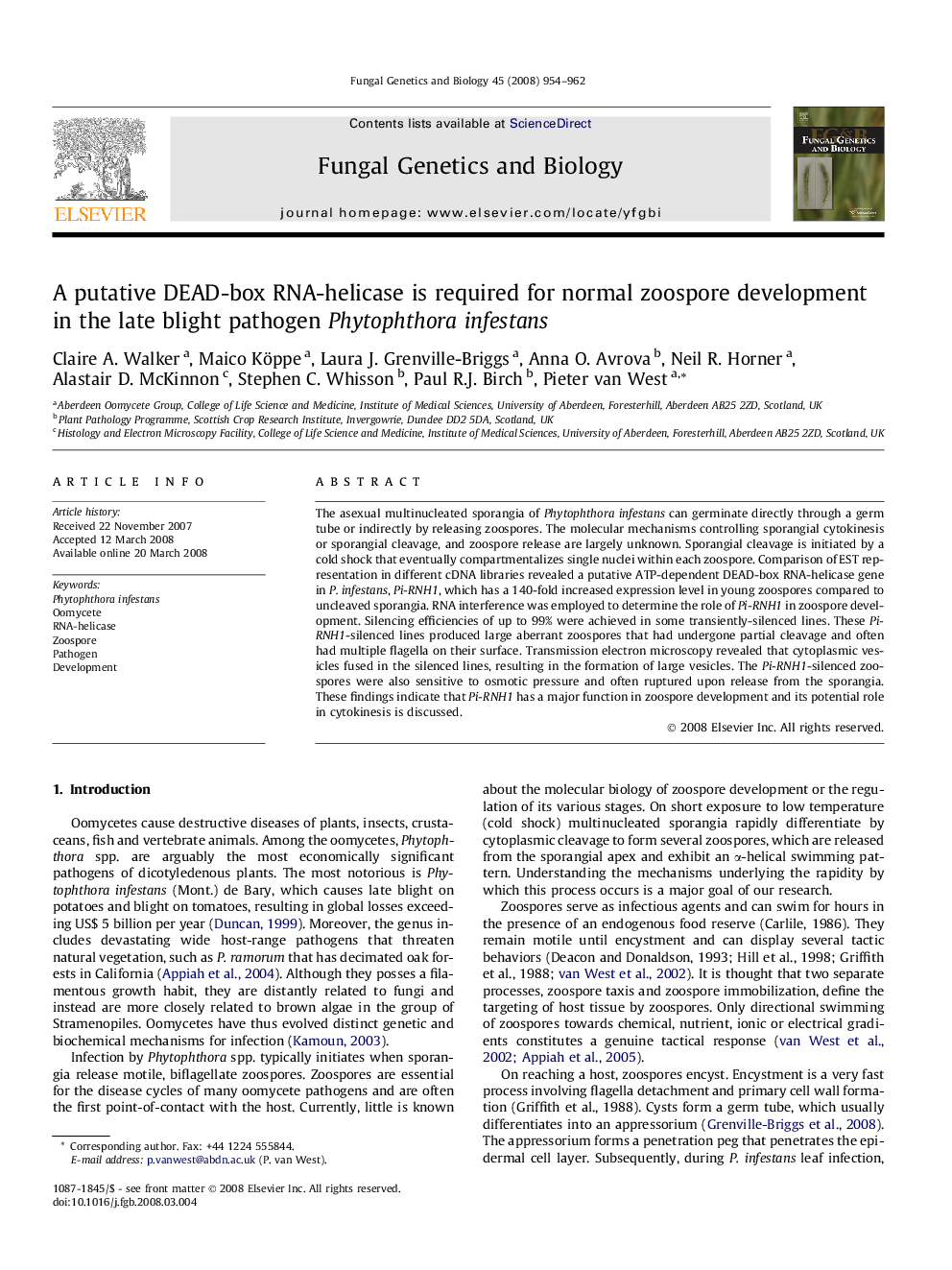| کد مقاله | کد نشریه | سال انتشار | مقاله انگلیسی | نسخه تمام متن |
|---|---|---|---|---|
| 2181376 | 1095292 | 2008 | 9 صفحه PDF | دانلود رایگان |

The asexual multinucleated sporangia of Phytophthora infestans can germinate directly through a germ tube or indirectly by releasing zoospores. The molecular mechanisms controlling sporangial cytokinesis or sporangial cleavage, and zoospore release are largely unknown. Sporangial cleavage is initiated by a cold shock that eventually compartmentalizes single nuclei within each zoospore. Comparison of EST representation in different cDNA libraries revealed a putative ATP-dependent DEAD-box RNA-helicase gene in P. infestans, Pi-RNH1, which has a 140-fold increased expression level in young zoospores compared to uncleaved sporangia. RNA interference was employed to determine the role of Pi-RNH1 in zoospore development. Silencing efficiencies of up to 99% were achieved in some transiently-silenced lines. These Pi-RNH1-silenced lines produced large aberrant zoospores that had undergone partial cleavage and often had multiple flagella on their surface. Transmission electron microscopy revealed that cytoplasmic vesicles fused in the silenced lines, resulting in the formation of large vesicles. The Pi-RNH1-silenced zoospores were also sensitive to osmotic pressure and often ruptured upon release from the sporangia. These findings indicate that Pi-RNH1 has a major function in zoospore development and its potential role in cytokinesis is discussed.
Journal: Fungal Genetics and Biology - Volume 45, Issue 6, June 2008, Pages 954–962